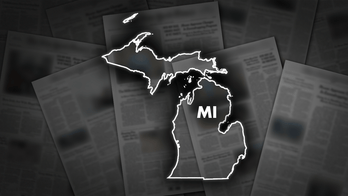Although the president and his aides trumpeted the ObamaCare enrollment figures as a success, the administration did not always see those numbers as something to brag about.
In his Rose Garden appearance this week, Obama seemed elated to proclaim "7.1 million Americans have now signed up for private insurance plans through these marketplaces."
But it remains unclear how many of those sign ups have paid premiums in order to be officially enrolled, or how many were previously uninsured.
In addition, even though officials are celebrating the 7 million mark,the White House once minimized numbers twice that large-- the 14 million people in the individual insurance market who were facing cancellations because their policies did not have all the required benefits of ObamaCare.
That created a huge political backlash, in part because the president had promised everyone could keep their plans and doctors "no matter what" -- so the president and his aides played the numbers down as just a small group.
In a news conference last November, Obama portrayed the individual market as a small portion of the insurance market, saying "Keep in mind that the individual market accounts for five percent of the population."
White House spokesman Jay Carney made the same statement repeatedly, including the next day, saying "Five percent of the country (is) in the individual insurance market, a portion of that five percent is affected by the cancellation notices."
Because of the public uproar, Obama asked state officials to allow those policies to be extended.
Twenty-one states, however, including California and New York, flatly refused. California alone had 900,000 individual policies cancelled, adding to a national total of several million.
Doug Holtz-Eakin, former head of the Congressional Budget Office, says "if you look at the 7 million and you shave off the 20 percent who probably haven’t paid, you've got about 5 and a half million people and that's roughly the number of people that were in the individual market and started having their policies cancelled."
That 20 percent number who don't pay has often been cited by insurance sources. Blue Cross/Blue Shield this week confirmed that up to 20 percent of those enrolled by February 1 still have not paid a premium.
As far as the potential cancellations, Carney referred to the 14 million as a "sliver" of the population, even though it's double the number of current signups.
“You need to look at the 7 million in the context of the U.S. population, and that's about 330 million people," says Dan Mendelson of Avalere Health, a non-partisan consulting and analysis firm. "So, this, this program is going to insure about two percent of the total folks who live in the United States."
So while the administration portrayed that two percent as victory, the five percent facing cancellations was minimized, leading Holtz-Eakin to observe that " it can’t be the case that, you know, five percent is no big deal and signing up two percent is a triumph, those two can’t stand simultaneously."
Some of those who were cancelled were forced into ObamCare, which added to the enrollment numbers, even though they only needed insurance because their policies had been cancelled, not because they were uninsured.





